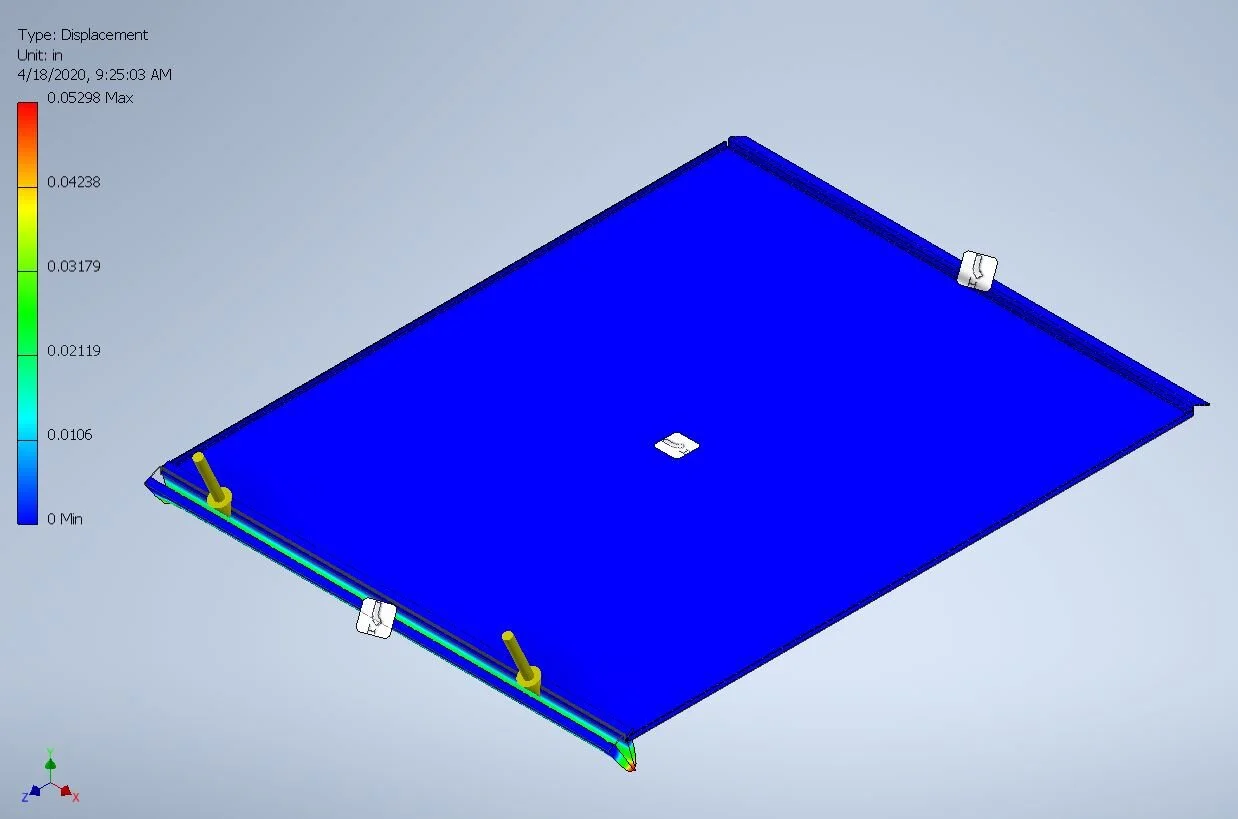
Slate
User Experience - Accessible Design - Personal Well-being
Sponsored by Georgia Tech’s Rehabilitation Engineering & Applied Research (REAR) lab, our mechanical engineering-industrial design multidisciplinary team were tasked to design a home-based platform for people in wheelchairs to measure and monitor their body weights independently.
My role was to mediate during team meetings, construct 3D models with electronic components in SolidWorks and Autodesk Fusion 360, and help design the user experience in Adobe XD.
This project was completed during the COVID-19 pandemic.

Weighing is important…
It is an important vital sign for health tracking. Keeping track of weight helps predict or prevent diseases like diabetes and gastrointestinal cancers.

Weighing is difficult with disability…
People in wheelchairs can’t always stand on a normal bathroom scale, and they have to go to the clinic for routine body weight measurements.

Wheelchair scales at the clinics are not ideal for
in-home use…
They are bulky, heavy, do not work well with furniture, and provide no feedback on progress.
So the objective of our project is to design an in-home weighing solution for people in wheelchairs, to help them better independently monitor their body weight.
The concept is that the actual weighing platform would act as a parking spot for wheelchairs. The scale would automatically weigh the user and the wheelchair while on the platform, and then once the user transfers off the wheelchair, the scale will automatically capture the weight of the wheelchair and find the difference to produce only the user’s weight. The unique feature of the concept is that the act of weighing oneself is integrated in normal activity. The user normally would transfer on and off his/her wheelchair at the beginning of the day and at the end of the day, and the weight would be captured during these experiences.
“The platform has to be at least 30’’ by 48’’ in size to provide adequate space for the users to mobilize themselves, and the wheelchair ramps must have a slope of 4.8 degrees for the users to safely get on and off the platform.”

From bench-marking existing wheelchair scales, researching on government regulations, and analyzing user feedback, our team finalized the design and engineering specifications.

From bench-marking existing wheelchair scales, researching on government regulations, and analyzing user feedback, our team finalized the design and engineering specifications.

From bench-marking existing wheelchair scales, researching on government regulations, and analyzing user feedback, our team finalized the design and engineering specifications.




Introducing Slate…
The ideal in-home weighing solution designed for wheelchair users with a sleek exterior and unprecedented weighing experience

To accurately and safely capture the weight being measured while keeping the cost low, our team decided to implement 12 load cell sensors with a limit of 50 kilograms per sensor and a Bluetooth module for data transmission.

The 12 load cell sensors are sandwiched between two 14-gauge cold-rolled steel plates and serve as pivot structures that support and stabilize the top plate during weighing. The arrangement of the sensors and location of the processing unit are shown in the render.

Both the top and bottom plates are bent into the desired shapes, and the edges of the bottom plate encompass the top plate, keeping it in place during weighing. The bottom plate has ¾ inch ramps on each side. By minimizing the thickness of the scale to 0.673 inch, the ramps can now be considered as thresholds, meaning the ramps can be made much smaller without violating the regulatory compliance.

The LED strip provides feedback about the current state or mode of the entire system.

The Slate mobile App encourages and facilitates users to actively monitor and manage their body weights.



Thanks to COVID-19, we were unable to construct a physical prototype to test the strength and durability of the weighing platform, so instead we created simulations with loads similar to those applied by a standard occupied wheelchair and performed finite element method (FEA) analysis on the CAD models with the intended dimensions and material properties. Moreover, we also simulated a scenario where the weighing platform was placed on a 0.5-inch-thick carpet-like (with similar Young’s modulus and hardness to rubber) sheet. The results are shown below.

Simulations specifically for the ramp were conducted to see how the ramp would be affected with 2 fully loaded rear wheels rolling up the surface. As you can see, the deflection in the ramp is minimal at 53 thousandths of an inch.

Simulations were also conducted for the entire scale assembly. The yield stress and safety factor were observed in the fully constructed assembly, and based on the orange coloring seen here we can say that the load cells are isolated, carry load from the top plate, distribute it to the floor through the base plate, and still retain a safety factor around 3.

These two views demonstrate that the safety factors for the top (left) and bottom (right), which are both greater than 3.

Lastly, we observed the full assembly, doing our best to design the constraints to simulate carpet, was still able to have a maximum overall displacement of 30 thousandths of an inch (left - front view / right - side view).
Overall, all these simulations provided proof that Slate is functionally sound and could handle the applied load mandated by our specifications.

